The Best Bass Strings (Light, Medium & Heavy Gauge) 2023
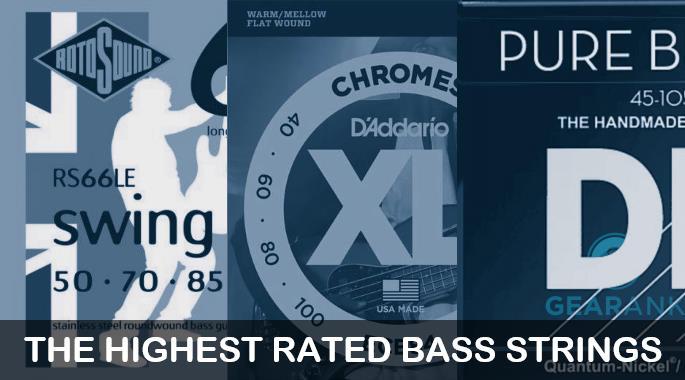
Author & Contributors
Alexander Briones
I have been writing about and researching music gear for many years, all while serving as a music director at my local church. I engage in guitar playing and singer-songwriter stints, in addition to mentoring young musicians and teaching guitar and bass.
Best Bass Guitar Strings - Light Gauge
Rotosound RB40
Cons
- Can be too bright sounding at first
Pros
- Bright and articulate initial tone
- Deeper and warmer tone as it ages
- Smooth and comfortable playing feel
- Lasts long
It's common knowledge that electric bass strings are replaced less often than guitar strings, mostly because of the extra cost. But there are bassists, myself included, who prefer the feel and warmth of old strings.
As such, I'm not too keen on fresh trebly tone. What's more important to me is long-term playability and how the tone warms up as the strings age. Being Rotosound's classic bass strings with old school tone, the RB40 has been meeting these considerations really well, with good tone, playability, and longevity.
The Rotosound RB40 is a 40 to 100 gauge bass string set meant for long scale basses like the ever-popular Precision bass. When freshly installed, each string feels crisp, and it has a bright tonality that makes upper fret playing sound articulate.
This early stage of the string's life will definitely appeal to those who are into trebly bass tones. As it gets more play time, it loses some of the zing. This is when I enjoy it more, sounding warmer and fuller while retaining good articulation. It is easy to incorporate into band settings because it doesn't get in the way of the vocals and other instruments.
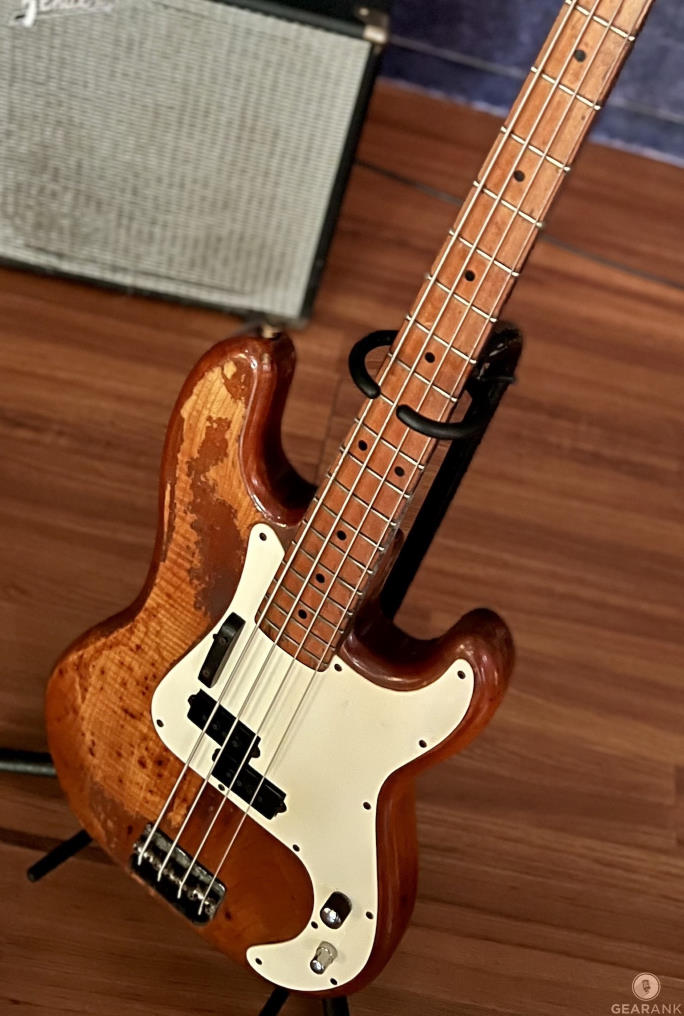
Playability is where the RB40 wins over other sets that I've used. Right at the start, all four strings have a smooth feel to them, which results in easy and comfortable playing. The gauge is also light enough for my fingers without sacrificing tone and tactile feel.
Understandably, it gradually loses its smoothness over time, but it is still quite easy on the hands after weeks or even months of use, as long as the strings are cared for properly.
Longevity is another aspect that surpassed my expectation. For a non-coated set, the RB40 lasts for a long time and has done so consistently. Even after six months, these bass guitar strings still have good intonation and do not feel too worn out.
The RB40 comes in a simple single-foil packaging similar to other Rotosound strings. The packaging is light yet sturdy, and unlike paper packages, it's not prone to wear and tear.
Aside from initially sounding too bright, I really can't find other faults. Highly recommended for those with long scale basses.
Specifications
- Gauges: .040 .060 .080 .100
- Material: Nickel Plated Steel
- Coated: No
| Website | Source | *Rating Value |
| Gearank | Alexander Briones | 96/100 |
D'Addario ECB84 Chromes Flat Wound
Cons
- Not for those who prefer trebly strings
- Different feel
Pros
- Warm and mellow tone
- Retains fresh tone longer
- Less string noise
- Deep bass
D'Addario continues to be a go-to brand for bass strings, with a long list of famous users, including Victor Wooten, Ron Blair (Tom Petty and the Heartbreakers), Robert DeLeo (Stone Temple Pilots), Gary Willis (Tribal Tech), and many more.
The ECB84, in particular, is a flatwound light gauge set, which follows after traditional design that provides a smoother feel and less noise when you slide your fingers. This smooth playing feel is not without fault because it feels substantially different, and the loss of grip makes it a bit harder to milk or bend.
Being a flatwound set, the ECB84 has a warmer and mellower tone compared to roundwound - more akin to acoustic stand-up bass. Note that it does have some treble when freshly installed, but not as much as roundwound bass strings. This makes it a great choice for those who prioritize deep bass sound over bright, trebly tones. It also means that you won't have to wait for the strings to age to get a warmer tone.
This set retains its tone for a long time, mostly because it already starts out warm-sounding, so treble loss is not as noticeable.
If you're looking for quality light gauge flatwound bass strings, then check out the highly rated D'Addario ECB84.
Specifications
- Gauges: .040 .060 .080 .100
- Material: Stainless Steel
- Coated: No
| Website | Source | *Rating Value |
| YouTube | LanceShellzShelton | 92/100 |
Best Bass Strings - Medium Gauge
Rotosound RS66LD Swing Bass 66 Stainless Steel Roundwound
Cons
- Not for those who prefer deep bass
- Thicker gauge requires more effort to play
Pros
- Punchy and articulate fresh tone
- Good low-end for a roundwound set
- Retains fresh trebly for a long time
- Familiar playing feel
The brainchild of engineer and musician James How, Rotosound strings have been the string of choice for many musicians, including notable bassists such as John Entwistle of The Who, Cliff Burton of Metallica, Colin Greenwood of Radiohead, and many more.
Back in 1962, Rotosound released the first roundwound string set for electric bass - the Swing Bass 66 set. Fast forward to today, roundwound strings have become the go-to set for many bassists. The RS66LD continues the legacy of the original while utilizing modern manufacturing and quality control methods.
This set continues to be a favorite in the medium gauge section, thanks to its bright tonality that produces more highs than other similarly spec'ed alternatives. It has a punchy yet articulate tone, which works well for many playing styles, including modern pop, dance, and slap bass music.
Being a thicker medium gauge set, it has deeper sounding lows compared to light gauge sets, but at the cost of being slightly harder to play. But even with its good bass, those who are into low-end thump and root notes will still find this set to be too bright sounding.
These bass guitar strings retain a fresh tone longer than usual, a testament to Rotosound's quality standards. Understandably, they will lose some of their zing as they age.
The Rotosound RS66LD Swing Bass 66 is a great set to get if you're looking for a slightly brighter-sounding medium gauge set.
Specifications
- Gauges: .045 .065 .080 .105
- Material: Stainless Steel
- Coated: No
La Bella 760FS Deep Talkin'
Cons
- Not for those who prefer trebly tone
Pros
- Hand-polished flat windings
- Premium smooth feel
- Deep and rich tone
- Ideal for older bass models
The La Bella is seen as the go-to brand when it comes to flatound bass strings, and the 760FS Deep Talkin' is a good example of why they are successful. It's a great-sounding set that opens up fresh and lasts long.
It utilizes stainless steel as its main material, with a standard scale length of 37 inches. But what sets it apart is its hand-polished flat windings, which give it a premium smooth feel. This premium feel has made the 760FS a favorite among fretless bass players.
The downside to its handcrafted quality is that it requires more production hours, which in turn drives up the price. Obviously, this set is not for those who are not into flatwound strings.
As a flatwound set, the La Bella 760FS sounds the part, having a deep and rich sound that suits older bass guitars like Precision and Jazz bass models. It also holds its fresh tone for weeks, mostly because there's not much treble to lose in the first place.
It ships in what the company calls "MAP" or Modified Atmosphere Packaging, which allows for longer shelf life.
The La Bella 760FS gives you the true feel and tone of a flatwound set, highly recommended for those who want to branch out from roundwound strings.
Specifications
- Gauges: .045, .065, .085, .105
- Material: Stainless Steel
- Coated: No
| Website | Source | *Rating Value |
| YouTube | Juan Modesto | 95/100 |
Best Bass Guitar Strings - Heavy Gauge
Rotosound RS66LE
Cons
- Harder to play
- Extra tension on the neck
Pros
- Bright tone with extended low end
- Huge projection and good sustain
- Long-lasting
The RS66LE follows after Rotosound's successful "Swing 66" stainless steel roundwound design, but this one is a heavy gauge. The label "long scale" refers to the string being designed to work for long scale basses like the P and J bass models.
As a roundwound stainless steel set, it sounds bright. But being a heavy gauge set, this brightness is balanced by extended low-end, thanks to the extra mass that each bass guitar string has. This results in a huge sound that resonates and sustains better than other heavy gauge sets.
The downside to the extra mass is increased string tension, which requires extra playing effort. This is the reason why heavy gauge bass strings are seldom used. Note that these strings apply increased pressure on the bass neck, so it is best to make sure that your instrument is compatible with heavy sets before going with this one.
Being thicker also means that this set stays fresh sounding and lasts longer. Since they start up with good bass, tone degradation is not as obvious compared to bright-sounding light gauge roundwound sets.
The Rotosond RS66LE is a no-brainer for those who want to switch to a heavier set while keeping the ballsy tone of Rotosound roundwound strings.
Specifications
- Gauges: .050 .070 .085 .110
- Material: Stainless Steel
- Coated: No
Rotosound SH77 Steve Harris Signature
Cons
- Not easy on the hands
- Need heavy gauge compatible bass
Pros
- High tensile strength
- Hard-hitting warm bass tones
- Smoother playing feel
- Great for metal and rock
The SH77 is a result of Iron Maiden's Steve Harris' and Rotosound's long history of working together. This set is designed to meet the expectations of Steve and is the set that he uses for his main 4-string bass guitar.
An important distinction that this string has is the use of Monel as its main material. Monel is a nickel alloy that was very popular back in the early days of steel strings, known for its high tensile strength and resistance to corrosion.
These days, manufacturers have gone with cheaper steel alloys, but there are still a few that offer monel strings, albeit at higher prices.
This set has flat windings, which gives it a warm tone that suits the style of Steve, and it gives it a smoother playing feel. The drawback to a heavy gauge flatwound is that strings are stiffer, which increases the difficulty of bending and vibrato.
The extra tension can also be tough on the structural stability of your bass, so best check if your bass can actually handle heavy strings before trying this out.
As expected, this set gets the heavy-hitting bass tones of Iron Maiden right. And as such, it fits in nicely for styles that require hard-hitting bass lines, like metal and rock.
Thanks to its high tensile strength and heavy gauge, this set is fit for those who use lower tunings.
The Rotosound SH77 is the set to get if you've got the bass and skills to handle heavy strings for heavy rock and metal playing.
Specifications
- Gauges: .050 .075 .095 .110
- Material: Monel
- Coated: No
| Website | Source | *Rating Value |
| AudioFanzine | MountAnDewMe | 100/100 |
Things to Consider when Buying Bass Guitar Strings
If you’re looking to learn more about bass guitar strings, check out the sections below. We’ll cover things like how string gauges and materials change your tone, as well as how to find the right strings to get the tone you want.
-
When we talk about "gauge", we're referring to how thick the strings are. So, for example, when someone says "heavy gauge strings," they're talking about bass guitar strings that are thicker than what you'd normally encounter.
The heavier the string, the harder it's going to be to play because the string itself is thicker. It takes more tension to get it up to pitch, and the more tension a string is under, the harder it is to press down. The opposite is true with lighter gauge strings, which are significantly easier to play than heavy gauge strings.
Heavy and light gauge strings also sound different. The heavier the gauge of a string, the warmer it's going to sound, and it's also going to produce a stronger signal (which means it will be louder coming through an amp). Lighter strings are the opposite, so they're going to be brighter and produce a quieter signal.
The following table lists bass string gauges that can be found in various standard (non-custom) sets. Note that these aren't an official standard, and different manufacturers make sets with different bass string gauges even though they use the same name, such as 'Heavy' or 'Light'.
Bass String Sets and their String Gauges G D A E Extra Light .030 .050 .070 .090 Light .040 .060 .080 .100 Medium .045 .065 .085 .105 Heavy .050 .070 .090 .110 Extra Heavy .055 .075 .095 .115 -
Bass guitar strings are made from a variety of different materials. Below we’ve listed a few of the most common ones and how they sound in relation to one another. Note that their natural sound can be tweaked using Bass EQ.
- Stainless Steel
Stainless steel bass guitar strings are the brightest-sounding electric bass guitar string. Because they’re made from stainless steel, they’re also more resistant to corrosion than a similarly constructed nickel strings. - Pure Nickel
Pure nickel bass strings are significantly warmer than steel guitar strings. They’re great if you’re looking to emulate vintage bass tones, though they do lack the punch and clarity you get with stainless steel bass guitar strings. - Nickel-Plated Steel
Nickel-plated steel strings are a great compromise between pure nickel strings and stainless steel guitar strings. They have a great combination of punch and warmth, though it should be noted that they aren’t as corrosion resistant as stainless steel strings.
- Stainless Steel
-
Flatwound and roundwound refer to a string's winding. Winding is the wrap of wire on the outside of a string. Roundwound, the most common winding, feels textured like the edge of a quarter. Flatwound is smoother (though still slightly textured).
Roundwounds have a brighter tone and more pop than flatwound strings, making them a good choice for those of you who are looking for a brighter and more aggressive tone. Flatwound strings are very warm and thumpy, which makes them great for smooth, melodic bass lines. And because they're not as textured, less dirt and oil sticks inside of their grooves, making them last longer.
-
Just like the wrapping of your string, your string's core is also going to have an impact on your tone. Hexcore strings, the most common type of string, have a hexagonal surface. Roundcore strings look like a piece of spaghetti.
The main benefit of roundcore strings is that they're easier to play. The wrapping is looser, so the string is under less tension. However, this does also mean that they don't have the articulation or punch of hexcore strings (though this might be a bonus if you're looking for a warmer tone!).
-
Coated bass strings are coated in a thin polymer layer to increase their lifespan. Coated strings are a controversial topic in guitar playing circles, with some loving their increased longevity and others feeling that the coating robs strings of their tone.
We wouldn’t necessarily say that coating a string hurts its tone, but it definitely does cause some high-end loss. Uncoated strings have a bit more treble. This isn’t really a bad thing, but it’s something to be aware of. If you like really warm sounding strings, a coated set might be right up your alley. Conversely, if you want a really bright tone from your strings you might be better off going with a non-coated alternative.
-
A lot of bassists ask, “What strings should I use if I want to play X genre?”. And that’s a good question to have, because it stands to reason that if strings have certain characteristics based off of what they’re made from then there should be a clear cut answer to which string is best for a given situation, right?
Well, it’s not quite that simple. The main thing to know is that you have to balance the tone of your strings with the tone of your amp and your guitar. So, say you want to play jazz. If you have a darkly voiced bass and amp, going with pure nickel flatwounds might make your tone too muddy.
With that being said, here is a table below that shows which strings have the potential to work in a given situation. But before you make up your mind which set is right for you, be sure to double check how your bass/amp sounds compared to how you want it to sound.
Genre Gauge String Material Core Slap Light to Medium Stainless Steel Hex Jazz Medium to Heavy Pure Nickel Round Country Medium to Heavy Pure Nickel Round Rock / Metal Light ot Medium Stainless Steel Hex Funk Light to Medium Stainless Steel Hex
How Many Strings on a Bass Guitar and Bass String Names
Most bass guitars, including acoustic bass, have four strings. And 4-strings is the default configuration. As such, bass string names are easy to remember, similar to the top four strings of a guitar. The thickest is the E string, next is the A string, then the D string, and the G string (EADG).
Once you memorize the names of bass strings, you can work your way up to familiarize yourself with each note on the fret.
Aside from conventional 4 strings bass, there are bass guitars with more than four strings. 5-string bass guitars are quite popular. It has an extra string on top of the low E, meant to handle lower frequencies. It is usually tuned to low B, so 5-strings have a default tuning of BEADG.
The standard bass guitar tuning corresponds to the names of bass guitar strings. Note that this tuning can change depending on what the bassist prefers.
There are basses with 6 strings and more, and they have more complicated setups, sometimes combining bass strings with guitar strings. Note that basses with more than four strings will require a different set of strings.
Bass String Gauge Explained
String Materials
Flatwound vs Roundwound
Hex vs. Round Core
Coated Strings
Matching Your Strings to What You Want to Play
Best Bass Strings Selection Methodology
The first edition was published in 2017. The current edition was published on July 11, 2023.
When we set out to create this guide, we knew that we had to limit our scope because of the many material, gauge and design variations that are available. As such, we decided to stick to basing the guide on the most commonly used gauges: Light (.040 to .100), Medium (.045 to .105) and Heavy (050 to .110).
This edition required the processing of over 18,700 reviews and ratings for 26 bass string sets that made it onto our short-list - you can see them all in the Music Gear Database. All these data were processed by the Gearank Algorithm which provided us with the rating scores out of 100 that we used to recommend only the highest rated options for the three gauge ranges. For more information about our methods see How Gearank Works.
About the Author and Contributors
Here are the key people and sources involved in this guide's production - click on linked names for information about their music industry backgrounds.
Lead Author & Researcher
Alexander Briones
I have been writing about and researching music gear for many years, all while serving as a music director at my local church. I engage in guitar playing and singer-songwriter stints, in addition to mentoring young musicians and teaching guitar and bass.
When supervising rehearsals and arranging for performances, a big chunk of my task is to keep musicians and instruments from overstepping their bounds. This often includes keeping the bass from overwhelming the mids and highs with an overly trebly tone. For this reason, I usually prefer warmer sounding strings, and if that's not available, I recommend adjustments to make the tone deeper and easier to manage.
Contributors
Mason Hoberg: Supplemental writing.
Jason Horton: Editing and Illustrating.
Media
Main/Top Image: Compiled using photographs of the Rotosound RS66LE, D'Addario ECB84 and DR Strings Pure Blues bass string sets.
The individual product images were sourced from websites, promotional materials or supporting documentation provided by their respective manufacturers.



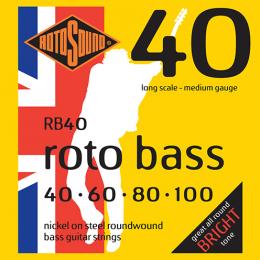
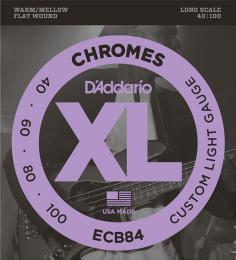
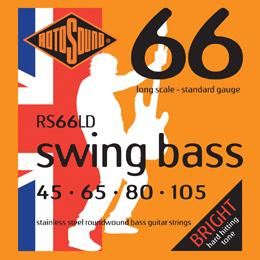
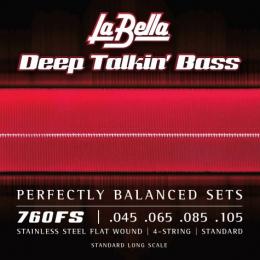
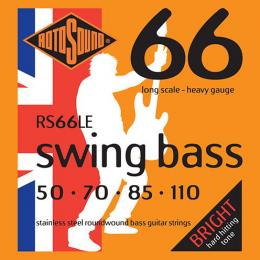
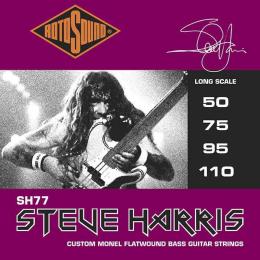
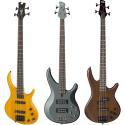
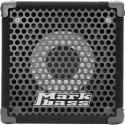

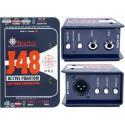
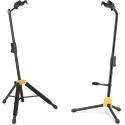
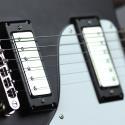
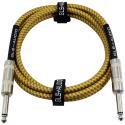
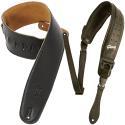





Comments
1962 Fender Bass Val - what
Submitted by Steve (not verified) on
1962 Fender Bass VI - what is the correct string gauge that fender used for this guitar and how far can you deviate in gauge? What is the scale length? What brand / set is recced for broad tone vintage rock, if someone does make a set, and to get that Jack Bruce/ Cream voicing? (With the correct Marshall model). Thanks
I haven't seen any
Submitted by Alexander Briones on
I haven't seen any customization info on Jack Bruce' Fender Bass VI. So it probably has stock specs, similar to modern Bass VI models. The Classic Vibe model has a 30" Scale Length neck, and are strung with Fender Nickel Plated Steel (.024-.084, Gauges).
When we published our August
Submitted by Jason Horton on
When we published our August 2022 Edition the following string sets came off the recommended list above due to being out-ranked:
Publication of our November
Submitted by Jason Horton on
Publication of our November 2021 Edition resulted in the following set coming off the recommended list above: Ernie Ball 2833.
As a result of our December
Submitted by Jason Horton on
As a result of our December 2020 update, the following set came off the recommended list above, but you can still see our analysis of them: DR Strings MR-45 Hi-Beam (Medium).
Nice comparison, but saddens
Submitted by Roy (not verified) on
Nice comparison, but saddens me not seeing amazing brands like Dean Markley's. Those gave new life to my Stingray. Cheers!
Rotosound 66 had the best
Submitted by FunkMan (not verified) on
Rotosound 66 had the best tone I ever heard but too many dead strings right out the pack. I switch to Hi-Beams while the tone isn't as good as Rotosound its close and I never got a dead string.
I have a ‘64 Supro Pocket
Submitted by Michael Rogers (not verified) on
I have a ‘64 Supro Pocket Bass with a 25” scale. There is 2” of clearance between the strings’ ball end of the trapeze tailpiece to the floating bridge. What specific brand and model black tapewound bass strings will fit on this bass, so that the silk on either end will not touch the nut and bridge? Thank you.
Reply to : mrogers57@gmail.com
I’m seriously suspect of this
Submitted by Erik (not verified) on
I’m seriously suspect of this so call best bass strings....but thanks for the article.
Can you tell us what in
Submitted by Jason Horton on
Can you tell us what in particular you find suspect?
As a result of our February
Submitted by Jason Horton on
As a result of our February 2020 update, and the change in eligibility criteria, the following sets of strings came off the recommended list above:
Good article but I was hoping
Submitted by Miles Ramstein (not verified) on
Good article but I was hoping it would mention one of the key benefits of flatwounds. I play with a pick and Chrome flatwounds. They make a lot less noise when your fingers run along the string and make minimal pick noise. They are also quite punchy when played with a pick. In fact, with active pickups and a pick they can be as punchy as any finger plucked string.
Thanks for the heads up -
Submitted by Jason Horton on
Thanks for the heads up - that now gets a mention in our February 2020 update.
Why no mention of GHS Boomers
Submitted by Tom Fuller (not verified) on
Why no mention of GHS Boomers? Or did I miss it.
The GHS Boomers are on our
Submitted by Jason Horton on
GHS Boomers are on our watch-list and are eligible to be selected for the recommended list above when we next update this guide. Last time they didn't have high enough ratings to make the list - you can see their current ratings here.
Seems like this article was
Submitted by Stephen Walsh (not verified) on
Seems like this article was sponsored by Sweetwater.
There are advertising links
Submitted by Jason Horton on
There are advertising links to both Sweetwater and Amazon (the blue buttons with their names on them) on this page, but neither of those two companies were involved in the process to select the sets of bass strings that we recommended.
As with all our guides, you can see how we made our selections in the Methodology section and additional information is available in How Gearank Works.
Actually, D'Addario makes
Submitted by Laughing Gravy (not verified) on
Actually, D'Addario makes Fender's strings. And you should mention Flatwounds are easier on the fingers and less noisy.